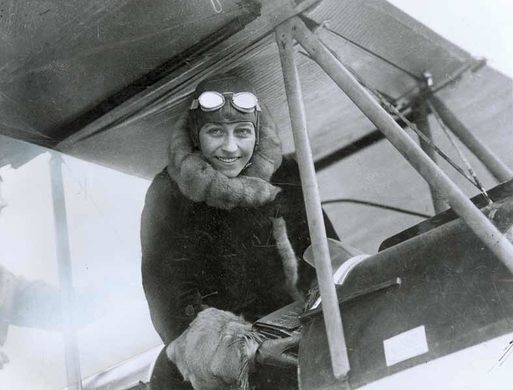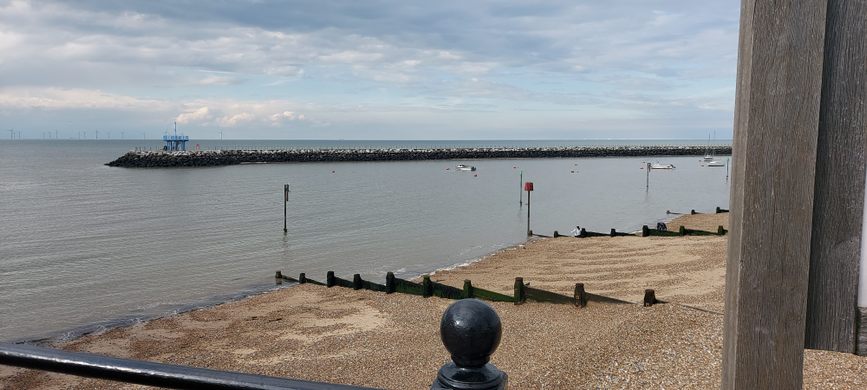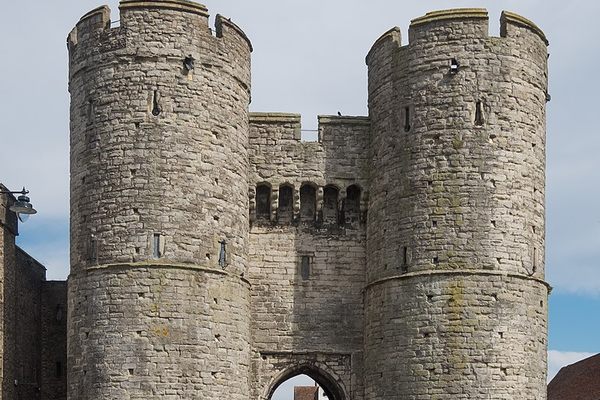AO Edited
Amy Johnson Statue
A statue paying homage to a world-record-setting aviator who disappeared under mysterious circumstances.
Amy Johnson became one of the most inspirational and influential women of the 20th century.
Born in 1903 to a fish merchant, Johnson grew up in Hull, studied economics at Sheffield University, before a failed love affair encouraged her to start a new life in London. She worked as a typist for solicitor William Charles Crocker and then seemingly on a whim, she boarded a bus to the London Aeroplane Club. Johnson became captivated with the planes and fell in love with flying. In 1929 she gained both an aviators certificate and a pilots C license. Her tutor was Captain Valentine Baker, who himself seems to have been a bit of a character, as in 1915 he took a bullet to his neck near his spinal column. When doctors informed him that an operation to remove the bullet might be fatal, he told them “leave it alone then” and the bullet stayed in there until his death in 1942.
During the 1920s and 30s, most female pilots were women with titles, such as Mary, Lady Heath. But with financial help from her father, Johnson continued to pursue her love of flying and bought her first plane, a second-hand Gypsy Moth that she named Jason, after her father’s business trademark.
When she announced that she was going to try to break Bert Hinkler’s record 16-day flight from England to Australia, there was little fanfare, although the newspaper the Daily Mail took particular interest in her sex, saying that she had flown off with “a cupboard full of frocks.”
Johnson left Croydon on May 5, 1930, after choosing the most direct route to Australia by placing a ruler on a map. The route led her over very tough terrain, with no radio communications to the ground. Some parts of the route had her flying over uncharted land. The terrain meant that she had to fly in the open cockpit for at least eight hours a day.
After a forced landing in the Iraq desert, she reached India in just six days. However, her biggest challenge en-route to Australia was in Burma (now Myanmar), where a rough landing due to a monsoon damaged her propeller and ripped a hole in Jason’s wing. The wing was repaired at a technical institute near Rangoon by unpicking shirts made of World War I airplane fabric.
The repairs from the monsoon took three days, meaning that she would never make it to Australia in time to beat Hinkler’s record. But on May 24 she landed in Darwin, Australia to massive crowds and much applause. (Johnson even addressed the crowd with a short speech.) Women asked for their hair to be permed with the “Amy Johnson wave” and songs were written about her (“Amy, Wonderful Amy” by Jack Hylton is the most well known). Fanmail poured in, and somehow, a letter addressed simply to “Amy wat flies in England” found its destination. She also received multiple awards for her flight, including a CBE in George V’s 1930 Birthday Honors and the Harmon Trophy. Her Gypsy Moth plane Jason is now on permanent display in the Science Museum in London.
Johnson’s next plane was a G-AAZV Puss Moth, which she named “Jason 2.” She used this plane to fly from London to Moscow with her co-pilot Jack Humphreys. They set another world record for flying the distance in under 24 hours. From there they continued across Siberia to Japan, again setting record time.
In 1932, she met and married Scottish pilot Jim Mollinson, who proposed mid-flight just eight hours after they met. The pair became known as “the flying sweethearts.” During a flight in July 1932, Johnson broke her husband’s record for a solo flight from London to Cape Town by 11 hours.
In 1933 the pair attempted to break the record for flying non-stop from New York to Baghdad. However, they crashed just outside of Stratford, Connecticut. Despite both being thrown from the craft, they both survived and after recuperating, they were treated to a ticker-tape parade down Wall Street and were entertained by President Roosevelt. The pair also flew in the Britain to Australia MacRobertson Air Race in 1934, but were forced to retire in Allahabad, India due to engine trouble. Again they set record time for their leg of the race.
In 1934, Johnson became the youngest president of the Women’s Engineering Society. In 1938 she overturned her glider at a display at Walsall Aerodrome and divorced Mollinson later that same year. After this, she turned her attention to other things such as business ventures, journalism, and fashion. She modeled for fashion designer Elsa Schiaparelli and designed a traveling bag for her.
During the Second World War, Johnson joined the Air Transport Authority, which transported aircraft around the country on behalf of the Royal Air Force. On Sunday, January 5, 1941, she set off from Blackpool with orders to deliver a plane to an RAF base near Oxford. This would be her final flight. Due to adverse weather conditions, Johnson went 100 miles off course and ended up 12 miles off the coast of the Thames Estuary near Herne Bay. Having run out of fuel, Johnson exited the craft and was seen parachuting down by a convoy and she was spotted in the water calling for help. Captain of HMS Haslemere, Lieutenant Commander Walter Fletcher maneuvered his ship to attempt a rescue.
Crew members threw ropes out to her, but she was unable to grab onto them and was lost under the ship. A number of witnesses claim there was a second body in the water. Fletcher dived in in an attempt to save both of them but accidentally let go and later died of exposure.
In 1999, a claim was made by a member of the 58th Heavy Anti Aircraft Regiment, that he had shot down the plane due to friendly fire when Johnson failed to give the correct radio signal twice. People say that this is unlikely due to the regiment’s distance from the plane. In 2016, a son of a crew member told a local historian that Johnson was sucked under the ship and into the propellers, although the crewman didn’t recall seeing this happen. One of the wilder theories is that she was on a secret mission, although this theory is mostly fuelled by a statement issued by Admiralty that mentions a second body, but the statement was then corrected. Although her belongings washed up nearby, Amy Johnson’s body and plane were never found, and exactly how she died remains a mystery.
The statue was commissioned by the Amy Johnson Project, and created in bronze by artist Steven Melton. She was unveiled at Herne Bay in 2016.
Know Before You Go
There is a large sign with lots of information about Amy near Herne Bay pier. The themed bench is also near the pier. There is a smaller sign next to the statue.
You can also see the remains of the old Herne Bay Pier just past the modern pier.
Plan Your Trip
The Atlas Obscura Podcast is Back!




























Follow us on Twitter to get the latest on the world's hidden wonders.
Like us on Facebook to get the latest on the world's hidden wonders.
Follow us on Twitter Like us on Facebook